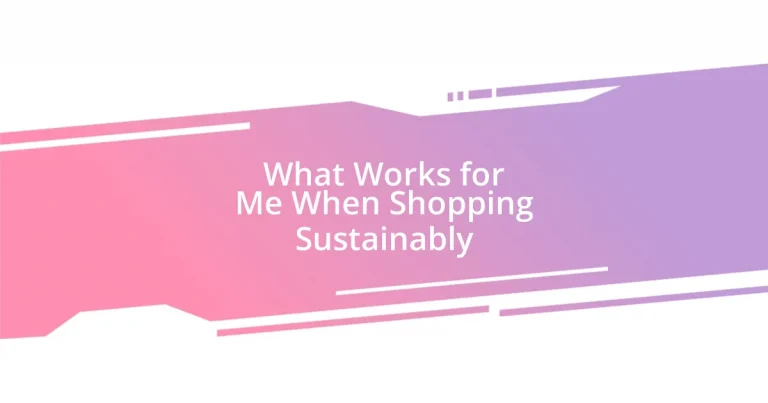Key takeaways:
- Sustainable shopping fosters a positive environmental impact and a sense of community by supporting ethically sourced products and artisans.
- Setting a flexible budget prioritizes intentional purchases, allowing for quality investments that are aligned with personal values.
- Choosing eco-friendly materials, local produce, and second-hand items significantly reduces waste and enhances the sustainability of shopping habits.
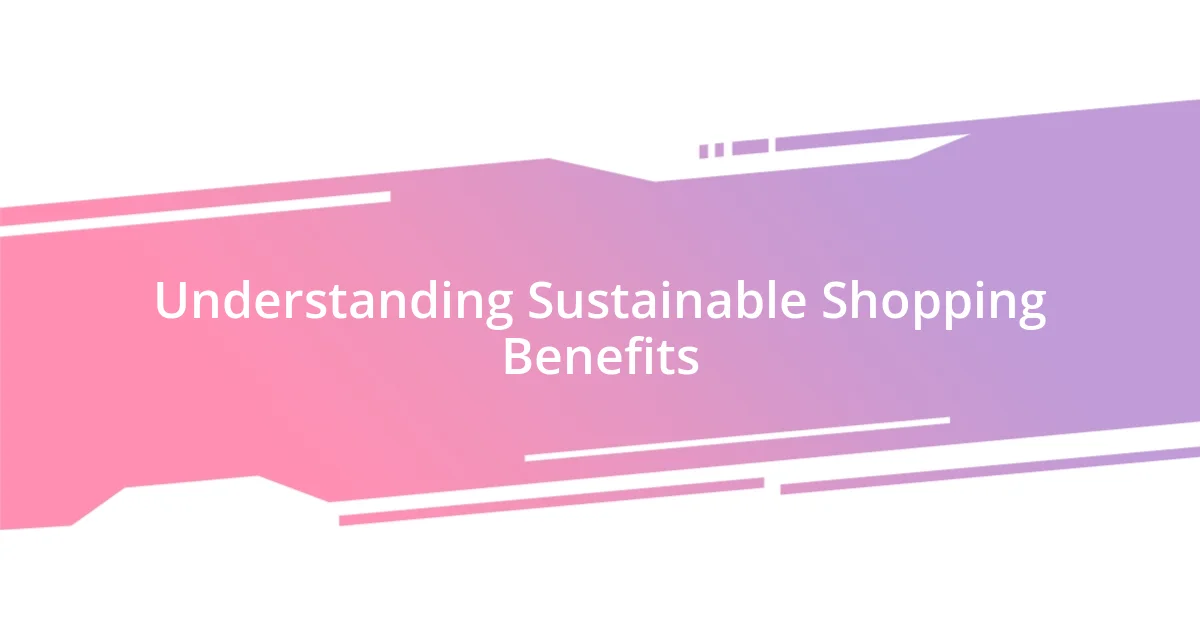
Understanding Sustainable Shopping Benefits
One of the most rewarding aspects of sustainable shopping is knowing that I’m making a positive impact on the planet. I remember the first time I chose a reusable bag instead of a plastic one; it felt small in the moment, but the realization that I was part of a larger movement made my heart swell. Isn’t it reassuring to think that our choices can contribute to a healthier environment?
When I consciously select products that are ethically sourced or made from eco-friendly materials, I feel a deep sense of connection to the broader community. There’s something powerful about supporting artisans and companies that prioritize sustainability. Have you ever considered how your spending can uplift those who care for the earth just as much as you do?
Additionally, sustainable shopping often leads to higher quality items that last longer. I’ve shifted my focus from fast fashion to timeless pieces that reflect my style and values. This not only saves money in the long run but also reduces waste—after all, isn’t it better to invest in something that brings joy and lasts rather than just accumulating more?
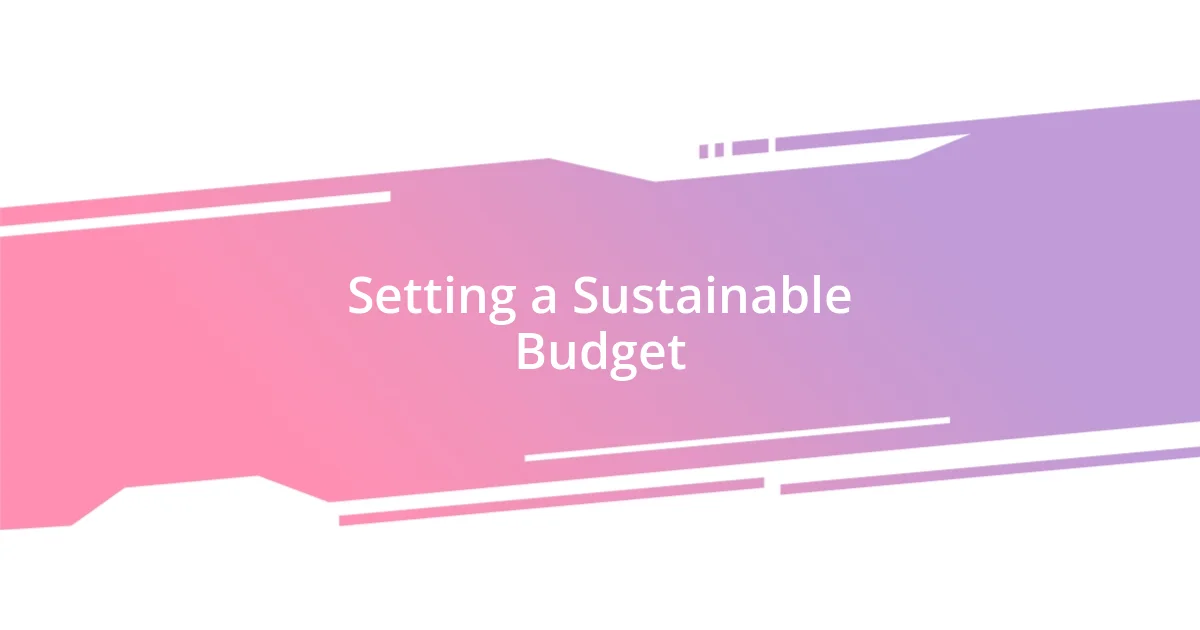
Setting a Sustainable Budget
Setting a budget for sustainable shopping can initially feel daunting, but it’s a crucial step in making mindful purchases. I recall my own journey of figuring out how to balance my desires with financial responsibility. What helped me was creating a flexible budget that allowed for occasional splurges on sustainable products without the guilt. By writing down specific categories, I could track my spending while ensuring that I still supported eco-friendly brands.
Here’s what I recommend when setting your sustainable budget:
- Identify Your Priorities: Consider what sustainable items are most important to you—whether it’s clothing, household goods, or food.
- Allocate a Monthly Amount: Set aside a specific amount each month to spend on these items. This creates a safety net for intentional shopping.
- Research Before You Buy: Look for sales and local markets to help stretch your budget further. Buying directly from artisans or attending community events often leads to great finds.
- Keep It Flexible: Life can be unpredictable, so allow for some wiggle room in your budget. If you find a piece you love, don’t shy away from making an exception occasionally.
- Reflect on Emotional Value: Before each purchase, ask yourself—does this item bring me joy and align with my values? That evaluation can guide you to making more enriching decisions.
These strategies have made sustainable shopping feel less like a chore and more like an enriching experience, allowing me to invest in what truly matters while keeping my finances in check.

Identifying Ethical Brands
Identifying ethical brands can often feel overwhelming, but there are clear signals to watch for. My approach typically starts with searching for certifications, such as Fair Trade or organic labels. When I see these, I immediately feel a sense of confidence that the brand values ethical practices and sustainability. Have you ever noticed how those little labels can shift your entire perception of a product?
Furthermore, I often explore a brand’s mission statement and practices on their website. This has become a ritual for me; it gives me deeper insight into their dedication to ethical sourcing or environmental stewardship. For instance, I once stumbled upon a clothing brand that not only made clothes from recycled materials, but also provided fair wages for workers. It was this transparency that helped solidify my trust in them, showcasing how much they care about both people and the planet.
Lastly, customer reviews can be a goldmine when it comes to identifying ethical brands. I’ve learned to pay attention not just to ratings, but also to the stories shared by customers about their experiences. One time, I read about a skincare company that sources ingredients directly from indigenous communities and reinvests in those communities. The combination of positive experiences and socially responsible practices made a lasting impression on me. It’s these narratives that create a richer understanding of a brand’s true ethical stance.
| Brand Aspect | Considerations |
|---|---|
| Certifications | Look for Fair Trade, organic, or cruelty-free labels that indicate ethical practices. |
| Mission Statement | Research if the brand promotes sustainability and fair treatment of workers. |
| Customer Reviews | Read experiences related to ethical practices and impacts on communities. |
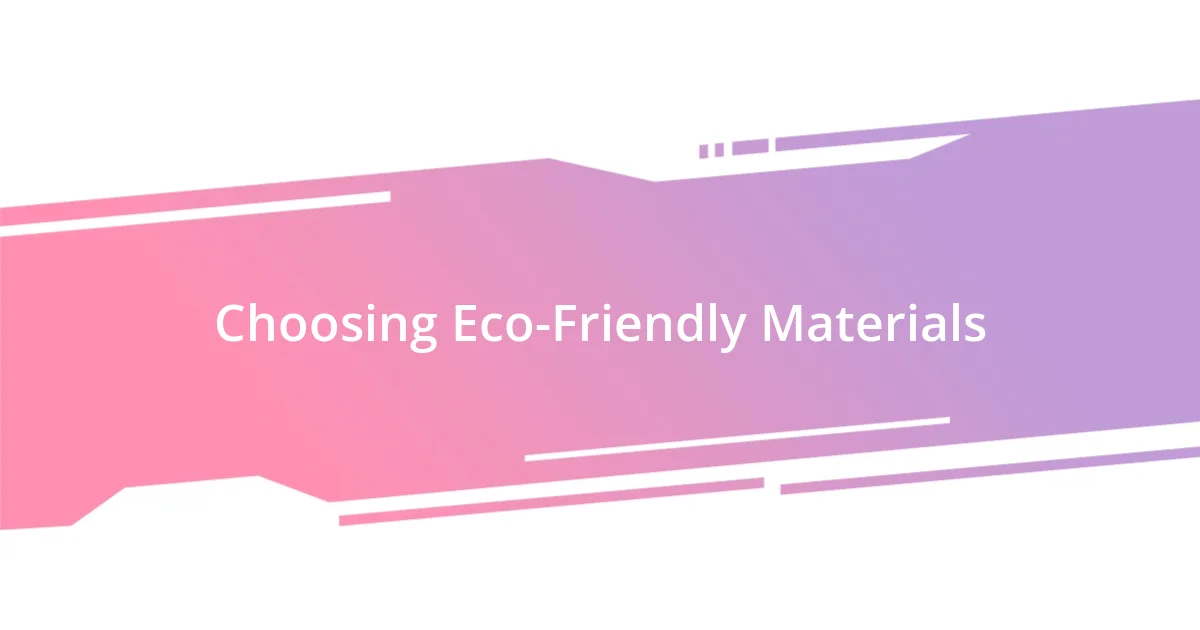
Choosing Eco-Friendly Materials
Choosing eco-friendly materials is essential in making sustainable purchases that truly make a difference. When I started prioritizing sustainable materials, I found myself gravitating toward organic cotton and hemp. These fabrics not only reduce the impact on our planet but also often feel better against the skin. Have you ever worn a shirt made from chemicals versus one made from organic cotton? The difference is tangible, making the choice feel even more rewarding.
Another aspect I’ve embraced is the use of recycled materials. I remember the excitement I felt when I discovered a brand that created bags from repurposed plastic bottles. It was like turning waste into something beautiful and functional. That experience urged me to consider how my own choices could contribute to a circular economy. Wouldn’t it feel satisfying to know that your purchases are helping to reduce landfill waste?
Lastly, while shopping, I’ve adopted a habit of examining the entire lifecycle of a product. For instance, when I chose bamboo utensils, I learned that they are not only biodegradable but also require fewer resources to grow compared to traditional wood. Reflecting on this has made me more intentional about my decisions. Could my choice of material spark a change in others’ shopping habits as well? I genuinely believe that each time we choose eco-friendly options, we inspire those around us to think differently, too.
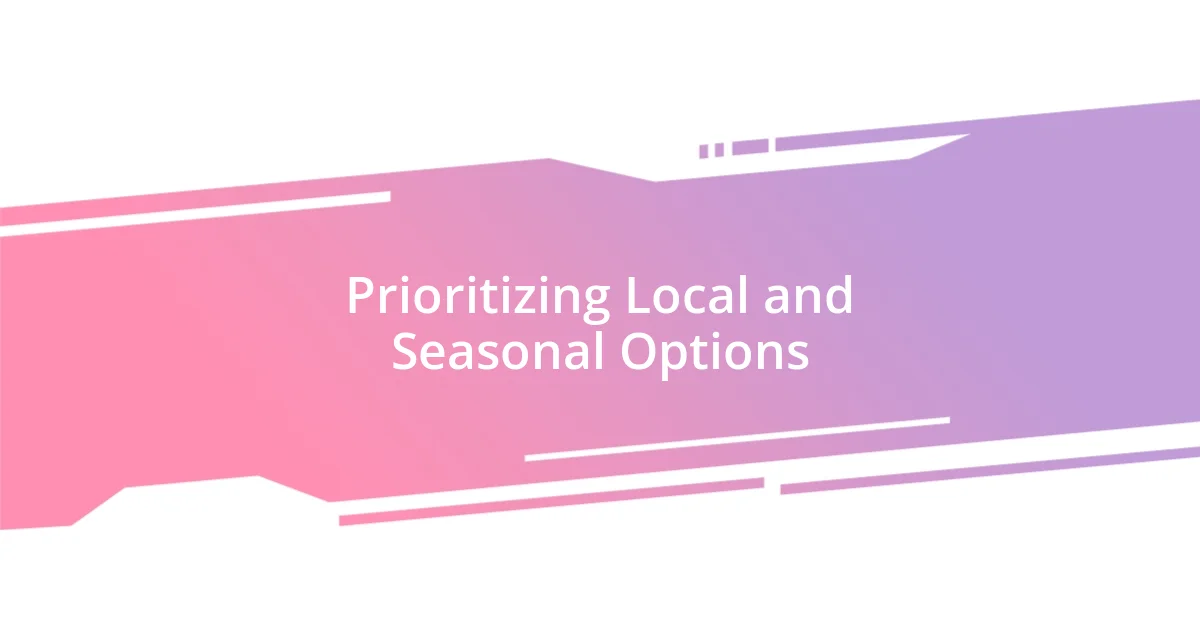
Prioritizing Local and Seasonal Options
Prioritizing Local and Seasonal Options
When I shop for food, I always find it worth considering local and seasonal produce first. There’s a certain thrill I feel as I walk through a farmer’s market, surrounded by vibrant colors and fragrant smells of fresh fruits and vegetables. Have you ever tasted a tomato that was picked the same day? The flavor is honestly incomparable and makes me appreciate what’s grown right in my backyard.
Supporting local growers not only delights my taste buds but also minimizes the carbon footprint associated with transporting food long distances. One summer, I joined a community-supported agriculture (CSA) program, and each week brought a surprise box of freshly harvested goodies. It felt like unwrapping a gift, and I loved discovering how many new recipes I could create with whatever was in the box. Isn’t it rewarding to know that my purchases directly support local families and economies?
Seasonal shopping has taught me a great deal about patience and connection to nature’s rhythms. I remember when I made a pumpkin spice soup during fall, using pumpkins from a nearby farm. That feeling of being in tune with the season enriched the experience of cooking and eating. Have you tried incorporating seasonal foods into your meals? It truly enhances not just the dish but your entire approach to eating sustainably.

Utilizing Second-Hand Resources
Utilizing second-hand resources has become a cornerstone of my sustainable shopping philosophy. I remember the thrill when I discovered a charming thrift store in my neighborhood. The thrill of uncovering unique items—like that vintage leather jacket that instantly became my favorite—felt like a treasure hunt, and I loved knowing that I was giving a second life to something that might have ended up in a landfill. Have you ever found something unexpected that instantly changed your wardrobe or home décor?
Exploring second-hand shops introduces me to stories embedded in each item. For instance, I once bought a bookshelf that had clearly seen years of use, with little marks that hinted at past adventures. It felt special to bring it home, not just for its utility, but for the history it carried. Isn’t it fascinating to think about the journey an item has taken before reaching you? Every piece I found was a little piece of history, and that deeper connection made my shopping experience much more meaningful.
Additionally, I’ve taken to online platforms that focus specifically on pre-loved items. I was pleasantly surprised when I scored a barely-used kitchen gadget that I had been eyeing at a retail store for months. It was a win-win: I saved money and minimized waste. Each time I make a purchase this way, I’m reminded that shopping sustainably can be both budget-friendly and eco-conscious. Why not explore what others have put up for sale? You might just find something that perfectly fits your lifestyle without the environmental cost.












